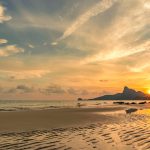Unexpectedly, Vietnam’s rainy season can be a fantastic opportunity to discover the country’s undiscovered beauties. What should I do in Vietnam during the rainy season? You will soon be covered by us!
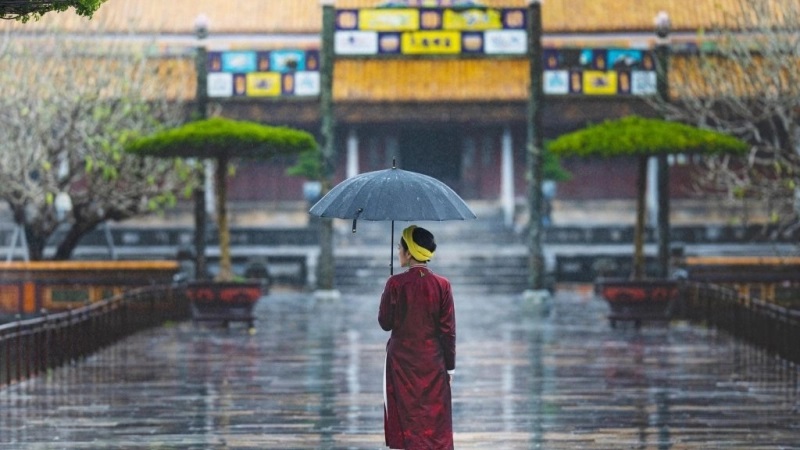
Vietnam experiences rainy season at various times throughout the year. This means that while it might be dry in one part of the country, it might be raining in another. Nevertheless, don’t let this get you down. No matter the weather, traveling to Vietnam has something to offer.
Reasons for traveling during the rainy season in Vietnam
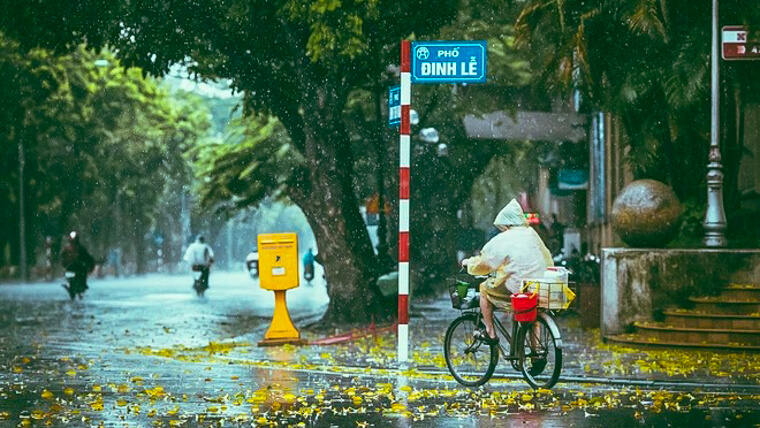
There are some good reasons to travel during the rainy season in Vietnam:
Exceptionally affordable costs for all types of housing, travel, and entertainment
Due to the lower volume of visitors during this off-peak travel period, you might even anticipate superior service.
Vietnam’s rainy season is ideal for travelers who detest perspiring on sweltering days.
Vietnam’s rainy season is a perfect opportunity to learn about the local culture since when it’s too crowded, some aspects are hidden.
Vietnam’s natural beauty in the rain has an enticing allure that is a joy to observe.
What are the typical features of the rainy season in Vietnam by region?
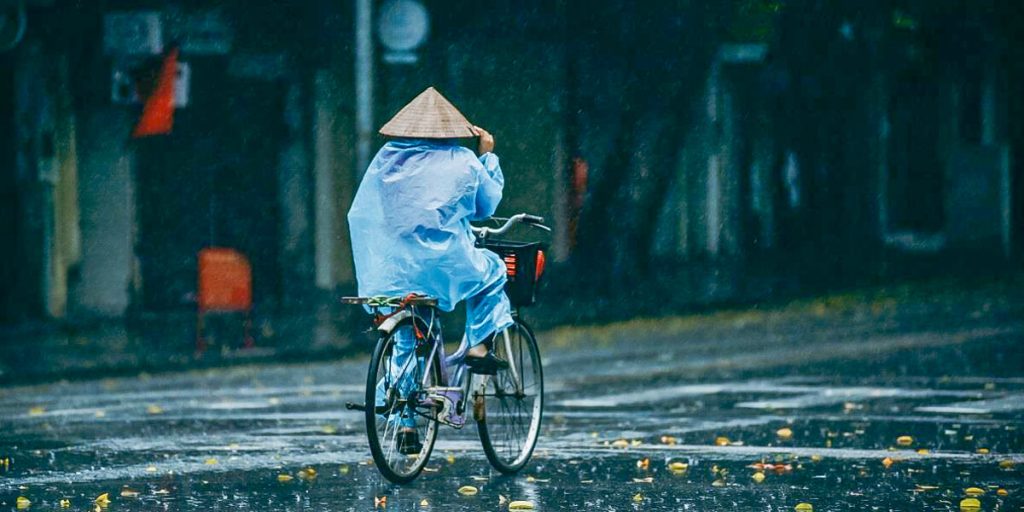
Is there a rainy season in Vietnam? What is the frequency of rain in Vietnam? The weather in Vietnam varies by region. Vietnam’s monsoon season varies depending on where you are in the country.
When does Vietnam’s rainy season begin? When does Vietnam’s rainy season end? The details about the rainy season in each region of Vietnam are included below:
The rainy season in Vietnam’s northern area (Hanoi, Ha Long, Sapa, Ninh Binh, Ha Giang)
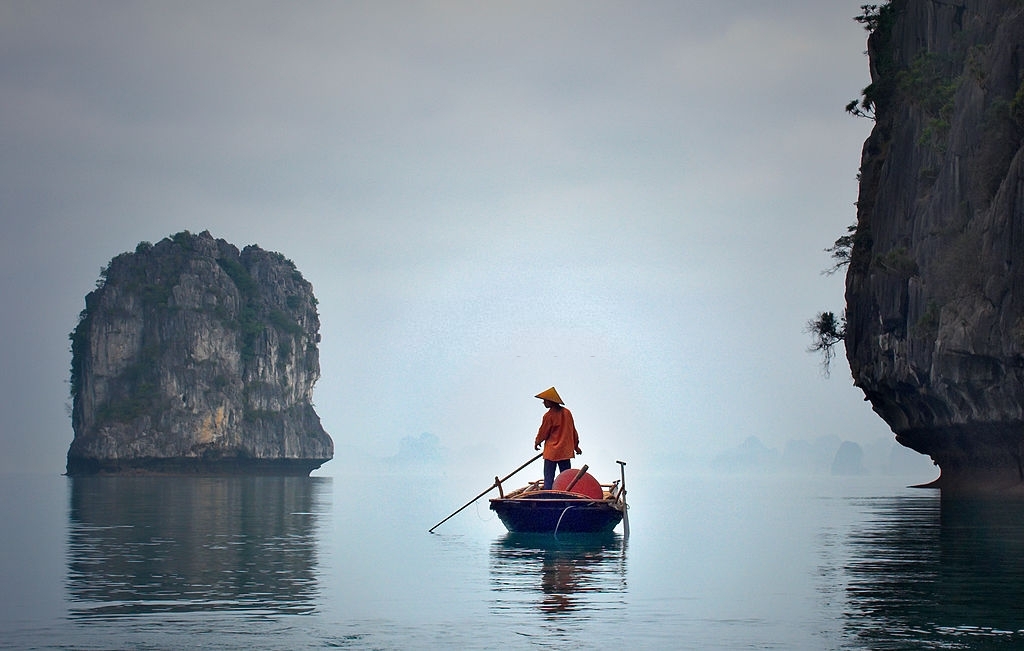
Vietnam’s north is never fully dry, especially while the country is experiencing a wet season. The greatest time to travel to this area is from September to December, when rainfall is at its lowest. Rainfall varies throughout the year.
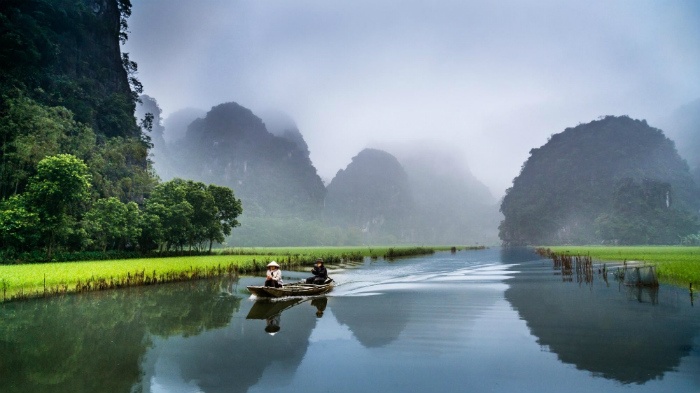
Northern Vietnam is traditionally divided into two regions based on rainfall: Sapa and the hilly areas in the west, and Ha Long Bay and the coastal areas in the east. The start of the rainy season is heralded by light rainfall and a rise in temperature at the end of April.
In Sapa, the rains begin to fall heavily in June, resulting in hazardous trekking conditions and slick ground. In Hanoi, Vietnam, and Ha Long Bay, the rainy season frequently starts a month later. The coast is frequently pummeled by tropical storms and heavy rainfall in the months of July and August. Extreme weather will bring Ha Long Bay tourism to a complete halt, so it is crucial to be aware of weather warnings.
Travel can be challenging owing to high heat and rainfall, even though Hanoi and the surrounding areas are not as heavily impacted by the storms as Ha Long Bay is in August. In contrast, August in Sapa is more drier and sunnier.
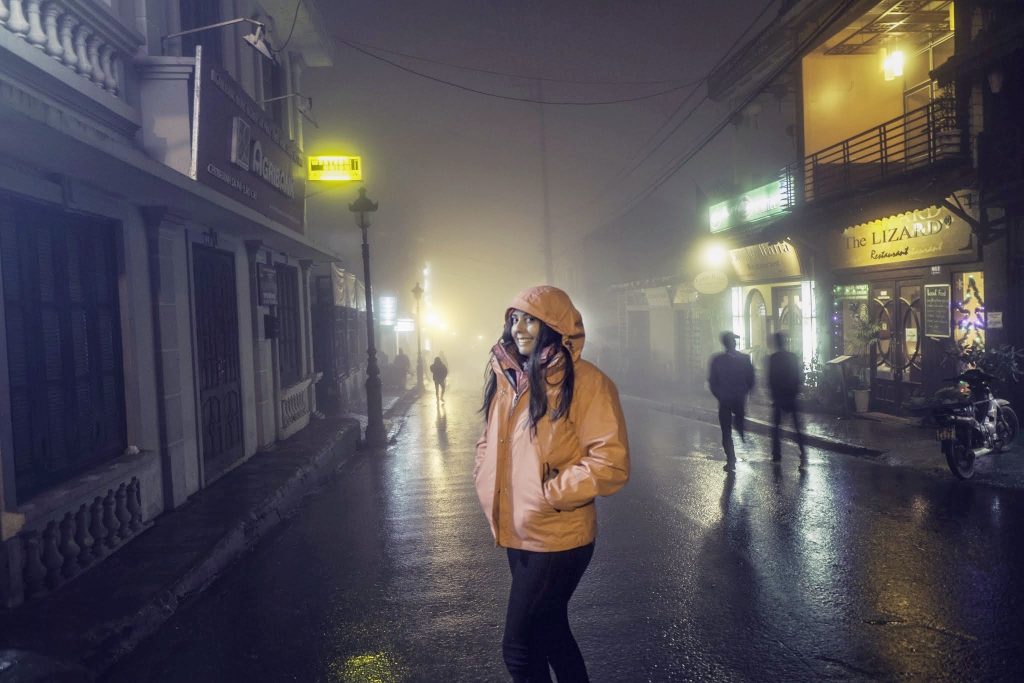
Though the trails may still be too slippery to trek on, it is still a nice time to contemplate the breathtaking beauty of the rice terraces here.
The rainy season in Vietnam’s central areas (Danang, Hoi An, Hue, Nha Trang, Da Lat)
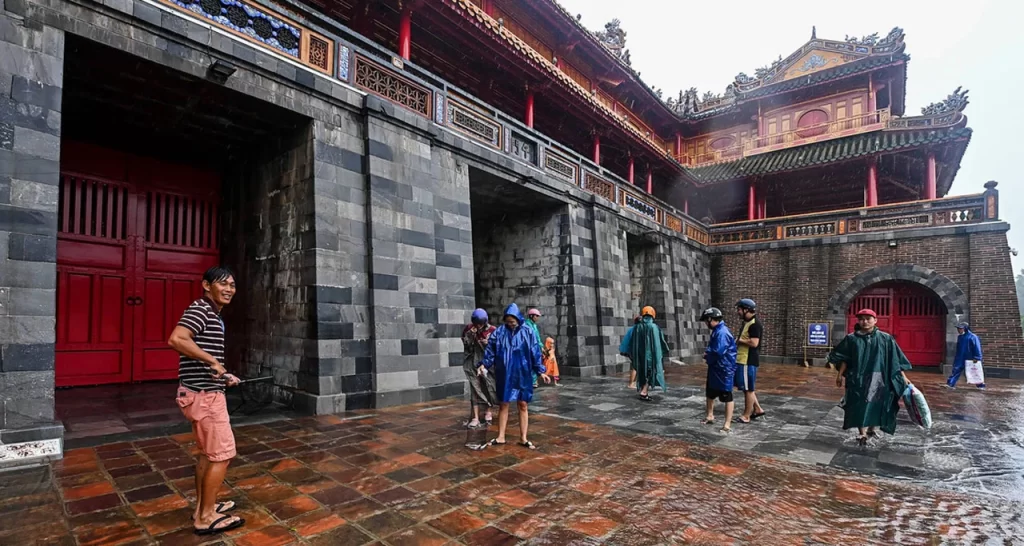
Similar to the north, occasionally it rains in the center of Vietnam throughout the year. The driest month of the year is between March and April. Da Lat and the Central Highlands, as well as the coastal regions (Hue, Danang, Hoi An, and Nha Trang), can be divided into two categories for the rainy season in central Vietnam.
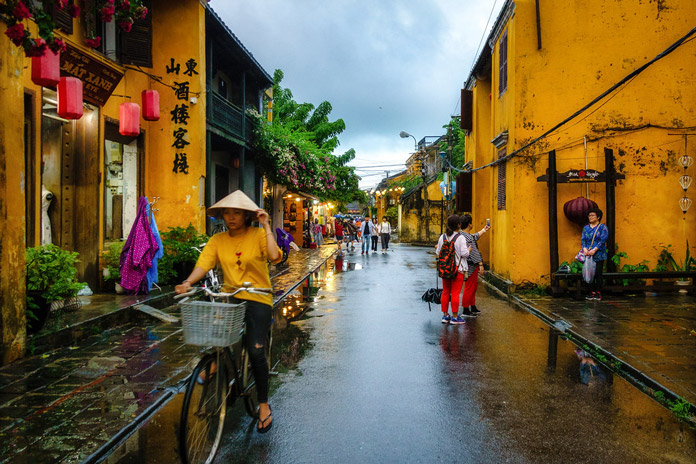
The two best months for travel, according to consensus, are January and February. Small raindrops merely serve to emphasize the pleasant weather and temperate temperatures of these months.
In the summer months of May and June, rain starts to fall in Da Lat and the Central Highlands. There are only sporadic rains and the weather is still gorgeous. Between July and September, when it rains the most, it starts to lessen until October. The best time to visit this area is in October, when you can enjoy delectable local cuisine, brisk evenings, and starry skies.

In the seaside cities (Danang, Hoi An, Nha Trang), the weather is the opposite. The best beach weather in these locations can be found from March until August, when it starts to rain. Beach vacations may be affected by the rainy season, which occurs between September and December in Danang, Vietnam, and other coastal locations. Hoi An, which is nestled along Thu Bon River, frequently floods in October.
The rainy season in Vietnam’s southern areas (Ho Chi Minh City, the Mekong Delta, Phu Quoc)
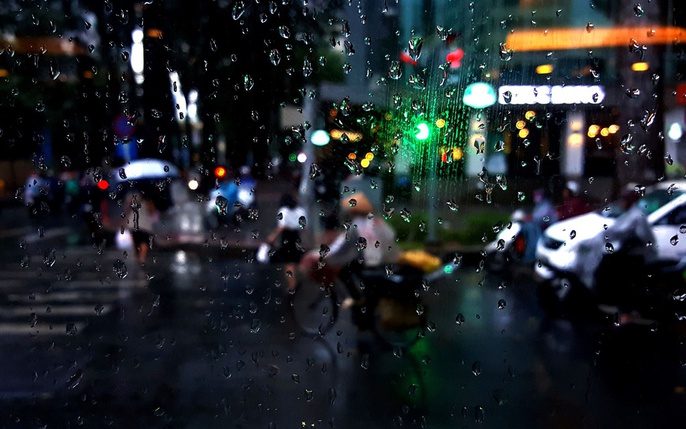
The rainy season in Vietnam is particularly pronounced in the south. The south has the longest monsoon season, running from May to October, as it is the most tropical of the three. South Vietnam experiences the rainy season from June to August, when humidity levels hover around 80%.
Despite having the most wet months, the weather in Southern Vietnam is never too awful. The majority of the time, heavy rain only lasts for an hour or two in the middle of the day. Even though it rarely rains all day, the best months to visit are from November to March if you want to completely avoid the weather.
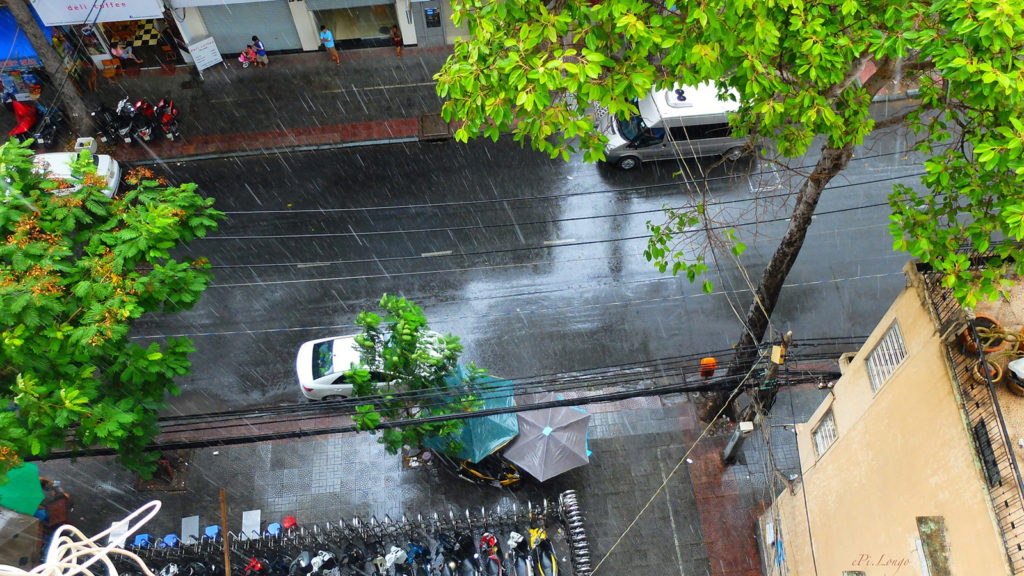
Southern Vietnam experiences average temperatures that range from 25 to 35 degrees Celsius. Due to its low temperature (only around 26 degrees Celsius) and little to no rain, January stands out as the best month to visit this region.
Tips for your visit to Vietnam in the rainy season
It is recommended to take indoor activities during Vietnam’s rainy season to stay out of the rain, like:
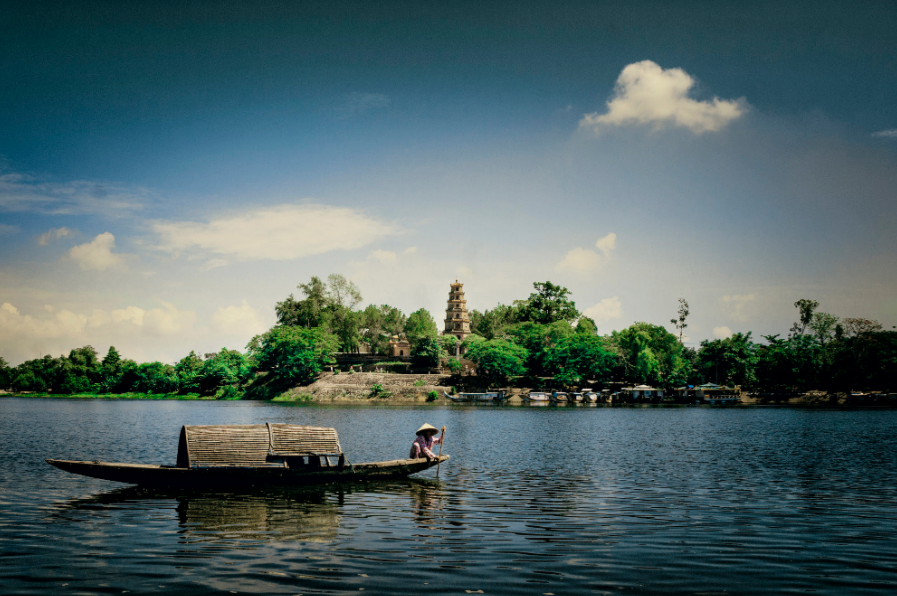
- Visit museums, temples, and galleries to discover the local culture: There is no better place to avoid the rain and pick up some knowledge than a museum. Temples and galleries are also fantastic places to visit on rainy days.
- Shop around: Vietnam is a wonderful spot to indulge in some window shopping. Just remember to bring an umbrella if you are going to visit an open market.
- Eat till you are satisfied: Enjoying food is another ideal activity during the rainy season in Vietnam. Have an unhurried bowl of soup, sip every last drop of flavorful broth, then walk on to find the next specialty to try.
- Explore Vietnamese coffee shops: It is easy to find a beautiful coffee shop on every street in Vietnam’s cities. If you haven’t tried a “ca phe sua da” or “ca phe trung”, you haven’t really tasted Vietnam. Most cafés now sell fresh juices, smoothies, and green tea as well in case you are not a fan of coffee.
- Have fun in an indoor playground: There are amusement parks in most big cities in Vietnam, where you and your families can have fun without worrying about the weather outside, such as VinKE in Hanoi, VinWonders in Nha Trang, Hoi An, and Phu Quoc, to name a few.

What to bring along?
- Hats and raincoats
- Easy-to-dry clothes
- Slippers and waterproof sneakers
- Waterproof backpacks
- Mosquito repellent and anti-itch cream
Extra notes for your trip
- Research about Vietnam weather by month before starting your vacation during the rainy season in Vietnam to see which destination is the most suitable to visit
- Avoid visiting islands during stormy weather, as sea travels may be hindered and you may get stuck on the island
- Climbing mountains is very dangerous at this time because of slippery roads and potential landslides
- Refrain from driving while it is raining cats and dogs or at night
- Plan a backup itinerary in case your original schedule is spoiled by the rain
The rainy season in Vietnam still offers a ton of amazing things to do. Under the rain, tourists may still find something to do in places like Hanoi, Ho Chi Minh City, Ha Long, Phu Quoc, Nha Trang, Hoi An, and Da Nang. Do not panic if you have already booked your travel but just learned that it will rain in Vietnam. Being able to witness Vietnam’s splendor during the rainy season will be a once-in-a-lifetime opportunity.
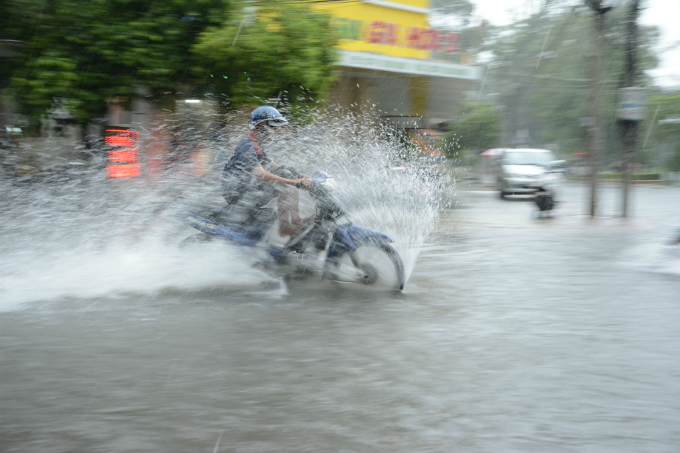
The hotels and resorts of Vinpearl, Vietnam’s top hospitality brand, should be taken into consideration if you’re looking for a dependable location to stay while on vacation there. Vinpearl, with its cutting-edge amenities and first-rate services, is the ideal spot to stay for a leisure trip in this S-shaped nation.
Given that hotels and airfares are less expensive and there are less tourists, Vietnam’s rainy season is something to think about. There is no reason not to travel to this country on days when it is raining as long as you are prepared. I hope the preceding advice will assist you in enjoying a hassle-free vacation!



